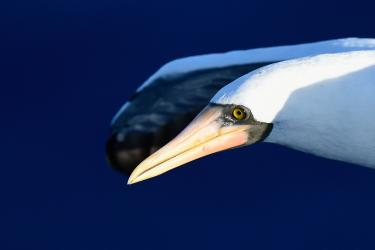Hello, I am Clöe Lemaire and I am a master’s student at Savannah State University. I have been able to study many different organisms, particularly those that are both an animal and a refuge for other animals. As a budding marine scientist, I have always been drawn to the study of ecosystem engineers. Ecosystem engineers are organisms which create, modify, and/or maintain their environment in some way.
I began my science career working with tropical corals in the Florida Keys and have ended up in the world of salt marshes studying oyster reefs. Upon beginning my master’s thesis work at Savannah State University in Georgia, I found myself interested in oysters, which function as both an economically and environmentally valuable species and habitat. Oysters are of keen interest in the state of Georgia and stakeholders would like to make the state a hotspot for oyster aquaculture. Oysters are grown many ways, but they are of the most value to the environment when they are grown in natural waterways in reefs, or floating bags and cages.
Georgia is not the only southeastern state with a vested interest in growing oysters. The oyster is extremely valuable as a seafood product and identifying the optimal conditions for growth would maximize the profit and benefits provided by oysters in natural waterways.
Recently, I participated in a NOAA Experiential Research and Training Opportunities internship through the Educational Partnership Program with Minority Serving Institutions. During my internship I worked with the Habitat Ecology Branch at the Southeast Fisheries Science Center in Galveston, Texas. I wanted to better understand how human-induced changes to water quality may impact oyster growth in the area. More specifically, I am interested in how changes to water chemistry impact an organism’s ability to make a protective shell.
My Project
I wanted to understand the short-term variability of pH in salt marshes and how it may be impacting the growth of Eastern oysters. I also wanted to identify the range of pH values which could ultimately support successful oyster restoration and aquaculture efforts.
I was eager to do a field experiment that examined differences in pH across a range of salinities and estuarine habitat types. pH—a measure of hydrogen ion activity—describes how acidic or basic a solution is and corresponds to the availability of carbonate in the water which is necessary for growing shells. Different habitat types are termed microhabitats, since they occurred on a small scale and were relatively close to each other. I was interested in understanding variability at the microhabitat scale so I could determine if zones in the open water or those closer to the marsh banks and creeks were better for oyster growth.
Decreasing pH values in coastal waters are an indicator of a process called coastal acidification, much like ocean acidification, which occurs in the open ocean. Decreases in pH are associated with a reduction in the available carbonate in the water, which poses a problem for organisms that rely on carbonate to build their shells, like shellfish and corals.
Why Eastern Oysters?
I chose to focus on Eastern oysters since they are a valuable U.S. fishery and provide numerous ecosystem services. Ecosystem services are benefits that are provided by a particular habitat or organism. Oyster reefs provide habitat for other valuable species, filter water, and protect shorelines against storms and erosion. Unfortunately, both oyster fisheries and the habitats’ ecosystem services have declined dramatically due to impacts from human activity.
Restoration of oyster reefs can enhance natural populations by creating artificial reefs to encourage the settlement of oyster larvae. Additionally, oyster aquaculture provides an opportunity to enhance the oyster seafood market, as well as the natural environment when these cultured reefs are grown in natural waterways.
Meet the Blogger
Clöe Lemaire
Clöe Lemaire is from Jacksonville, Florida and completed her bachelor’s degree at the University of North Florida in coastal biology and French language. She is now pursuing her masters degree at Savannah State University in Georgia. Her favorite part about marine science is that everyday is a different challenge. She hopes to continue her research in habitat conservation and restoration by pursuing a career with NOAA after graduation.







